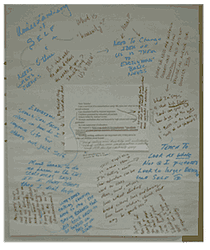I have worked at an alternative school in Scarborough (Toronto’s east end) with students that are 18-20 years of age for the past seven years. These students represent some of the most disengaged and difficult to reach students in Scarborough (if they were not, they would never arrive at my school). In that time I have come to learn: one, the term ‘Inner City Schools’ is an awkward designation given that in Toronto, at least, most of our ‘at-risk’ students are in the inner suburbs, not the inner city; and two, I have found no magic teaching strategy to solve the dilemma of reaching these students (if there was, I suppose, there would be no need for the on-going discussion and my school would not exist). Moreover, ‘Inner City School’ students are, like every other, a diverse group, and an approach that may work for one student may not work for another.
With those caveats always in mind, I would offer the following strategies that I have found work (at least some of the time):
- Provide structure. For those whose lives lack any degree of consistency a structured classroom creates a safe space. Many of my students face a never ending stream of change and inconsistency. Their addresses and phone numbers are changed as frequently as most people change their oil. If students know what they can expect from your classroom, they can feel safe and comfortable here. It will not magically turn them into organized, punctual, consistent people, especially at the age I see them, given they have rarely been taught these skills elsewhere, but it will give them a reason to attend when they can, and it will give them the comfort to stay the days they do attend.
Facing History and Ourselves Strategy for structure: three-part lessons offer consistent structure and allow multiple points of entry. See Facing History’s UDHR 4: What is a Right? or The Power of Quotes as examples. - Be flexible. While structure is important, do not become rigid. Treat deadlines as preferred submission dates. Life’s challenges and learned habits mean they will not all be able to meet strict deadlines; it does not mean these students cannot demonstrate skills if allowed to do so in their own time. This means that we must move beyond the test as the basis for evaluation. Find the core elements of the curriculum that your students need to know, and allow that they may not learn every ‘specific expectation’ (per Ontario Curriculum). And if one approach does not work, be willing to find another. If a student struggles to read a text-based document in the History classroom, find a visual document to teach the skills and then return to the textual document.
- Use visuals. Images and video are often more accessible and more engaging for students. In the age of Google Images and YouTube it is relatively easy to find visual documents to support your curriculum. A great tool for incorporating visual documents into a Facing History classroom is the Gallery Walk.
 Keep the students active. Do not forget the kinesthetic learners. If we do not create room for them to move in the lesson, they will make it for themselves (possibly to unfortunate ends). When possible, get the students up and moving. The Gallery Walk is also a wonderful tool to this end as well. Other great Facing History strategies that will keep your students moving include Four Corners Debate, Barometer, and Big Paper.
Keep the students active. Do not forget the kinesthetic learners. If we do not create room for them to move in the lesson, they will make it for themselves (possibly to unfortunate ends). When possible, get the students up and moving. The Gallery Walk is also a wonderful tool to this end as well. Other great Facing History strategies that will keep your students moving include Four Corners Debate, Barometer, and Big Paper.- Explicitly teach coping skills. Make sure students learn to regulate themselves. Keep an ‘emotional barometer’ (i.e. check in with and see how they are feeling). Teach coping strategies. And have students think about who they are and what they want and need. In following Facing History’s learning Journey, we begin with Individual and Society, which gives us the chance to help students explicitly consider their own identities, and how these are shaped by both social factors and personal values.
Finally, know your students and genuinely care about them. If you do, they will know, and you will find a way to reach them, at least some of the time. Remember, though, that they are your students and not your children, and you are their teacher, not their parents (in loco parentis does not equal parent). They need to know you care, but they need to learn to support themselves beyond your classroom.
Given my own admitted limits, please offer any insights you might have into reaching ‘Inner City’ students to help expand and improve this discussion.

